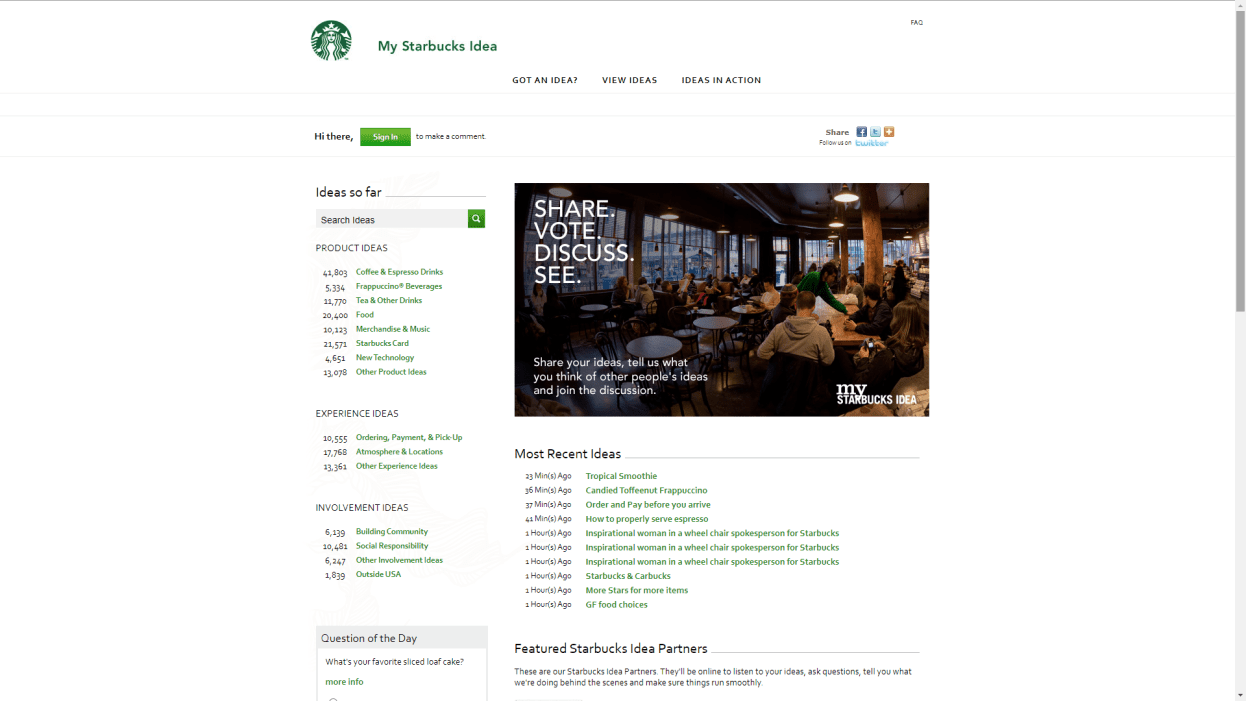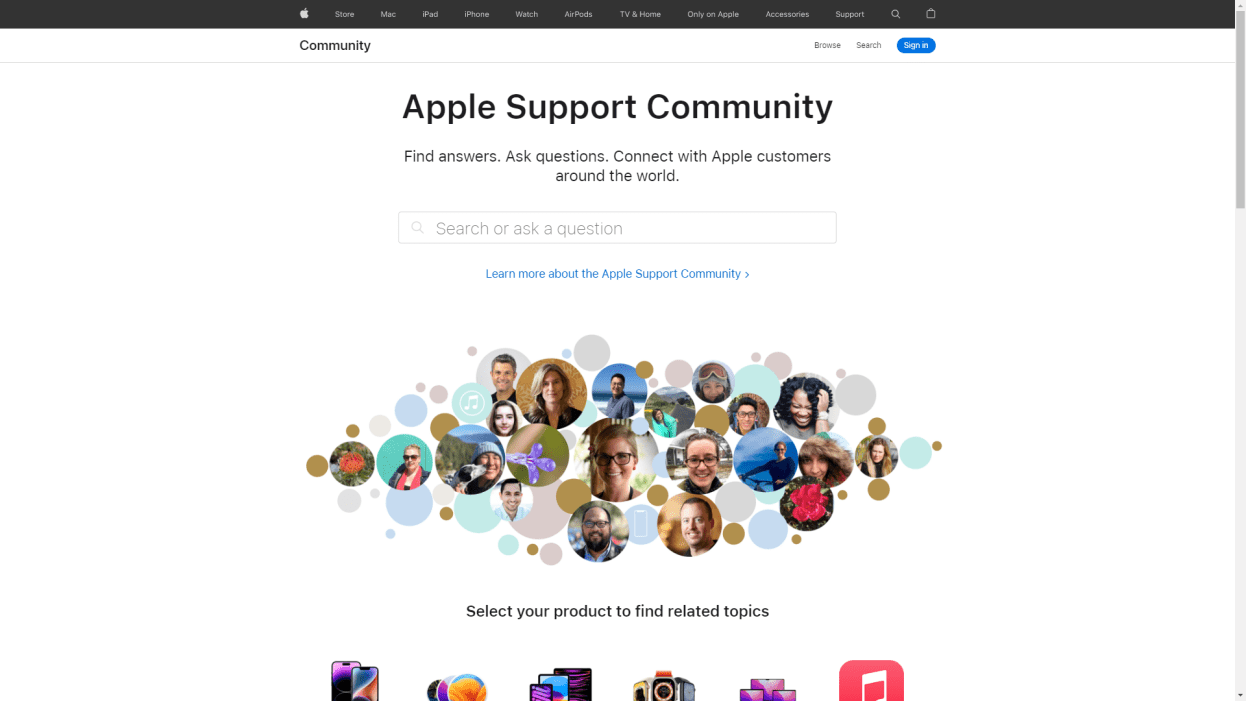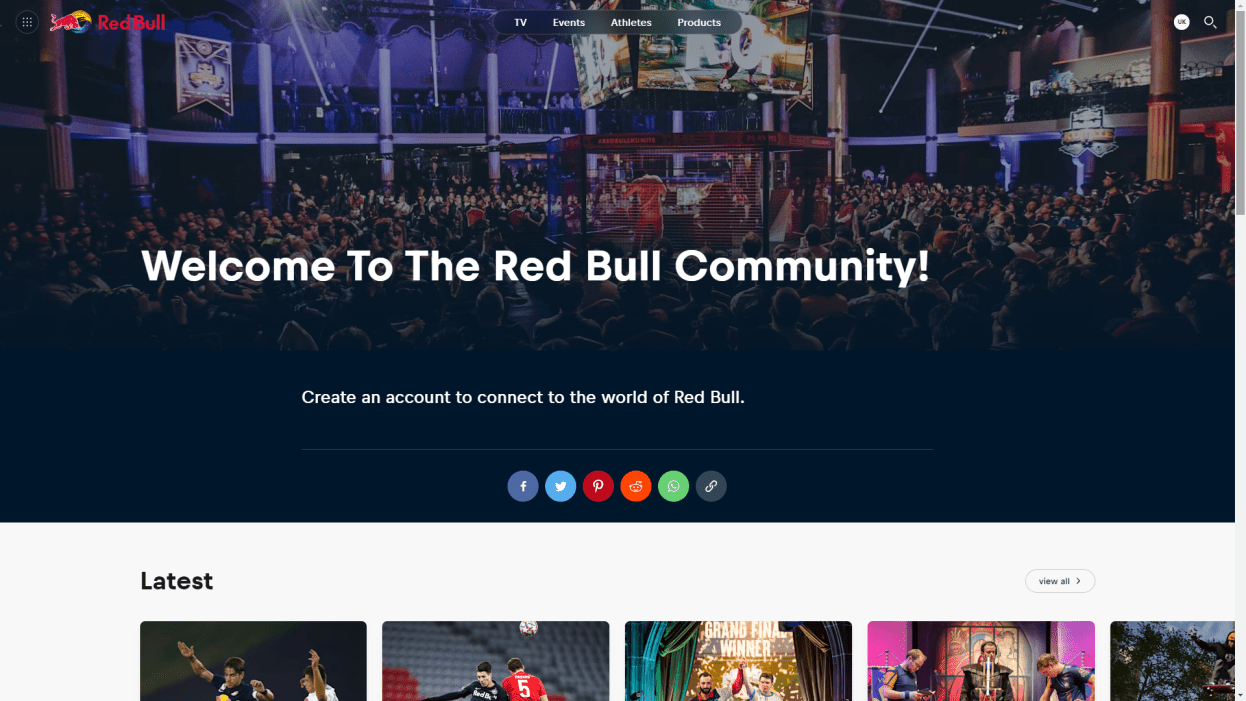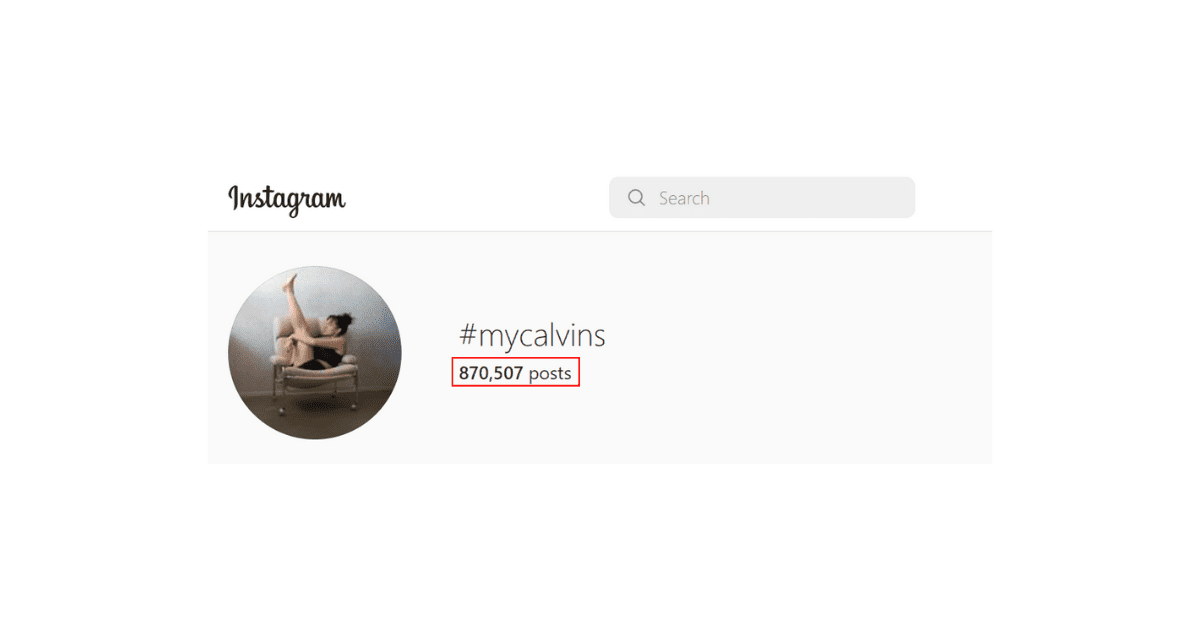How to create a Brand Community around your Business?
Creating a powerful and engaged brand community doesn’t happen overnight.
It involves bringing together people who share an interest in or passion for the same product or service you provide. It gives customers a sense of belonging, encourages long-term loyalty, and drives engagement.
With some planning, dedication, and effort, you can create relationships within your customer base that will lead to long-term business success.
This article will show you how to create an influential brand community around your business.
What is a Brand Community?
A brand community is a group of people connected by a shared interest in or passion for a particular product or service. It can be made up of customers, employees, and even influencers who have an affinity for the brand.
But what is a brand community in marketing?
Brand communities provide an opportunity to create relationships with customers that go beyond just buying and selling products. They offer a platform to engage with customers on a deeper level, build loyalty, and create a sense of belonging.
Best Brands with Communities
Brands with communities have an advantage over those without.
Community-based brands are able to build relationships with their customers and drive engagement.
Brands that have successful communities can also benefit from increased customer satisfaction, improved customer service, and more effective marketing campaigns.
Here are some of the best brands with communities that drive engagement and loyalty to become globally successful brands.
1. Starbucks

Starbucks is an iconic example of a brand that promotes a sense of community, not just online, but in person as well.
The Starbucks clan is exclusive since the company listens to customer reviews to hold its viewers fascinated and make personalized material.
Starbucks launched the Starbucks Rewards loyalty program, allowing consumers to accrue stars when they shop, play games, and take part in bonus point events. Another great idea is the Leaf Rakers Society on Facebook, for those passionate about fall and their pumpkin-spiced latte.
My Starbucks Idea was an online platform where anyone had the opportunity to impart their opinion to Starbucks.
This website enticed devotees of the brand to share their notions and recommendations on how it can upgrade its treasured goods.
2. Lululemon Athletica

Lululemon Athletica has become a leader in the athleisure trend, offering luxurious yoga gear and apparel that empowers its customers to lead an active lifestyle.
They have created a strong brand community by providing accessible experiences for their members.
From free yoga classes to larger festivals and events, Lululemon gives people the chance to sweat, meditate, and retreat from the chaos of everyday life. To further engage with their community, they opened an experiential store in Chicago that features several fitness studios, a juice bar, and of course their signature high-quality athletic gear.
The company’s commitment to creating meaningful experiences for its customers is what sets them apart from other brands in the athleisure space.
By providing these opportunities for people to come together and be active in a supportive environment, Lululemon is able to foster a sense of connection among its community members.
This dedication to creating an engaging experience has helped them build a loyal customer base that continues to grow as more people discover the benefits of living an active lifestyle.
3. Apple

Apple became a leader in the tech industry by creating a strong online brand community.
The company’s goal was to sell a lifestyle, not just products, and they achieved this by fully comprehending their target audience and building a team of brand enthusiasts. Through this community, Apple offers its customers more than just technology; it provides them with opportunities and connections that can be formed through its products.
This lifestyle-focused approach has resulted in Apple becoming synonymous with customer loyalty and brand advocates.
By providing an engaging platform for discussion and connection, Apple has created an environment where customers feel valued and appreciated.
4. Spotify

Spotify is a popular streaming service that allows users to listen to music and podcasts from all over the world.
It also has a dedicated community website, which provides an online platform for users to discuss music, share ideas, and find solutions.
Additionally, there is a blog page where users can explore more about music and podcasts as well as learn more about their favorite artists.
With this community platform, Spotify has created an engaging space for its users to connect with each other while discovering new music and podcasts.
5. Red Bull

Red Bull is a brand that has become synonymous with energy drinks and extreme sports.
The company has built a strong community around its products, sponsorships, and word-of-mouth advertising. Through the Red Bull community, members can stay informed about upcoming events such as festivals or eSports.
The website is the main platform for this community, where members can read blog articles, and learn about events, products and athletes.
The brand’s business strategy focuses on building stronger relationships with consumers by providing them with an engaging experience.
Members can also take part in exclusive competitions and giveaways to win prizes or discounts on products. With this approach, Red Bull has been able to build a loyal following of fans who are passionate about its brand and what it stands for.
Why are Brand Communities Important?
The rise of social media and their different values have encouraged a shift towards building brands that take the community into account, impacting new generations of consumers.
Brand communities are important because they provide a platform for customers to interact with each other and the brand. This helps build trust and loyalty, as customers feel like they are part of something bigger than just buying a product.
Additionally, it allows brands to gain valuable insights into their customer base, as well as feedback on products and services. This can help them improve their offerings and better meet the needs of their customers.
Brand communities also provide an opportunity for customers to share their experiences with each other, creating a sense of belonging and connection. This can help brands build relationships with their customers and create a positive brand image.
Benefits of Building a Community around your Brand
The essence of branding is that an organization’s name carries value, shaped by how the company behaves and the community it has. Developing a powerful brand following is a useful asset in the online world.
It is important to recognize that your online audience already exists. Your task is to find and join this group, so you can develop a successful marketing plan that appeals to its members. To sum up, your brand community provides an immense opportunity and should be used to your advantage.

Here are the top benefits of building a community around your brand.
1. Easy Communication with your Target Audience
Having strong two-way communication with the target audience is essential for any successful brand.
A brand community allows you to communicate with your target audience better and faster. A brand community also helps you gain first-hand insights into customers’ opinions and interests.
A good brand community assists business reach and growth by providing valuable feedback and helping you understand what needs to be improved. Additionally, it can spread the word about your way of doing business and make customer-driven decisions.
Some brands even prefer to develop a customer portal for creating an even more engaged community.
2. Makes Your Brand an Industry Authority
Creating valuable content for your followers can spark discussion and help to establish your credibility.
Having a higher level of authority will result in increased reach, thus likely leading to more people recommending your brand.
Building strong brand recognition is difficult, especially in saturated markets like today. Established companies must work hard to maintain their status of trustworthiness and quality.
Building a brand community around your brand helps you achieve it through word-of-mouth.
3. Identify & Validate Big Ideas Early
Engaging with your audience and creating transparency are both important elements of giving customers an unforgettable experience.
A brand community allows your target audience to be part of the development of the brands they love.
Instead of investing heavily in research, you can reap the rewards of collaborating within your digital customer network. This allows you to turn customer knowledge into success, and at the same time increase customer loyalty.
4. Builds Brand Loyalty
Offering quality products alone isn’t enough to build loyalty and gain followers for your brand.
Those who engage with companies on social media are seen as loyal customers. Nine out of ten people say they purchase products from the brands they follow online.
Giving a great customer experience is integral to keeping customers, as 57% of customers remain loyal to brands they love. Loyal consumers form an integral part of the brand, and they can help spread the word about products or services.
Enhancing loyalty and connection with your audience will help to boost your brand awareness.
How to Build a Loyal Community Around Your Brand?

By creating a space where people can come together, share their experiences, and interact with the brand, businesses can foster relationships that will last for years to come.
It’s time to bring together the existing fans of your brand and create a place for them.
Your brand community will act as a brand magnet that will attract your target audience and make them your loyal customers.
Steps to Build a Brand Community
To build a successful brand community, you can employ various strategies that work. Here are the fundamentals to help you select the right approach for your business objectives.
#1 Understand Your Brand
Understanding your brand identity is essential for creating an engaged community. It requires more than just understanding your product or service.
Your business’s mission, vision, brand identity, and audience perception should all be considered while defining your Brand. List and define what is your brand aiming to achieve. Which group is it wanting to assist? What do you want people to recognize your brand by?
It is an essential step in building a community, as your entire brand community and the long line of loyal customers attract the right kind of people.
#2 Set Goals & Metrics for Your Brand Community
Before you start building your brand community, it is important to set goals that will help define the purpose of your community.
Your goals should be specific and measurable, such as increasing customer loyalty or boosting brand awareness. Your goals for your Brand Community should serve a real purpose for your customers, target audience, and brand to become successful.
And based on your Brand Community goals, you should also decide on the metrics you will use to measure progress toward these goals.
For example, if your goal is to increase customer loyalty, you can measure it by tracking the number of repeat customers or the amount of time they spend engaging with your brand.
#3 Identify Your Core Community Members

Examine your present customers, email lists, social media handles, and real-life relationships to select members for your future community.
It’s a great idea to start with those who already have some interest in your brand and may suggest it to others.
Once you have a good number of people as the core members of your community, you can connect them with each other and determine how to connect with the group.
These core members will be the brand advocate for your brand who create and share content that reflects and emphasizes your brand values.
#4 Choose a Community Platform
Choosing the right platform for your brand community is essential to ensure that it runs smoothly and efficiently.
The platform should be easy to use, secure, and have features that will help you engage with your audience.
You can choose from various platforms such as forums, social media groups, or even dedicated websites.
a. Forum as a Brand Community Platform
A forum is an effective tool for creating a larger online community that can discuss related topics, both about the brand and outside of it.
While social media groups are great for sharing content and engaging with your audience, Forums are great for discussing topics.
Take Spotify’s fan community as an example. With an extensive fan base, a forum is an excellent platform for Spotify. Forums provide an opportunity for Spotify to host conversations about music, with their streaming platform at the heart of it all.
b. Social Media as a Brand Community Platform
Social media groups are great for engaging with your audience and sharing content. You can create private or public groups on platforms like Facebook or LinkedIn to connect with your target audience.
Social media websites also allow you to share content, answer questions, and provide support to customers in near real time.

Communities can also be built through a hashtag, similar to how Calvin Klein has done with their #MyCalvins hashtag.
They feature photos that are posted using the branded hashtag #MyCalvin on their feed, building brand loyalty and adding user-generated authenticity to their feed.
c. Dedicated Website for a Brand Community Platform
If you want to create a more comprehensive and interactive community, you can create a dedicated website for it.
This will allow you to have more control over the user experience, features, content, and ownership of the content that is shared on the website.
You can also integrate other platforms such as forums or social media groups into your website to make it easier for users to access all of your content in one place.
d. Third-Party Community Platforms
Brands often use external platforms to create and manage a community.
Third-party platforms like Slack, Discord or Discourse are great for creating a community that is focused on specific topics.
Platforms such as Slack and Discord provide the option to create various channels/topics that your community members can explore and engage in. These platforms provide features such as private messaging, polls, and media sharing that make it easy to engage with your audience.
You can also integrate other tools such as analytics and customer support into these platforms to make it easier to manage your brand community.
The Challenge with Third-Party Community Platforms

One of the biggest challenges to building your brand community on third-party platforms is that the platform will subside your brand name.
For example, if you’re hosting your brand community on Discord, every notification that your community members will ever receive will be from Discord. And whenever someone wants to mention your community, Discord will be mentioned more than your brand name.
In addition, platforms like Facebook, Discord, or any other external platforms come with their own set of policies and limitations. And as your community grows, it will require more features and flexibility to keep your members engaged.
Dedicated community-building platforms like Build on Scenes give you the flexibility and features that are absent in third-party platforms. Moreover, with such dedicated platforms, you can also white-label your brand community to emphasize your brand values in the community.
Once you have chosen the right platform for your brand community, you can start creating content and engaging with your audience.
#5 Create Engaging Content
Creating content that resonates with your target audience is essential to engage them in your brand community.
Content should be relevant to the interests of your target audience and should provide value to them.
One of the best ways to create engaging content and keep your brand community active and growing is to get your core members involved. Reward programs and incentivizing good and highly-engaging content are also effective strategies to keep your brand community active.
You can create blog posts, videos, podcasts, or even host webinars to engage your audience. You can also use social media to share content and encourage conversations.
#6 Monitor & Engage with Your Community
Once you have created your brand community, it is important to monitor it regularly and respond to any queries or comments from your members.
Give your audience a reason to come back and engage regularly with the community.
This will help you create a positive impression of your brand.
Answer their questions, spark discussions and share content that encourages conversations within the community. You should also engage with your members by asking questions, providing feedback, and encouraging conversations.
This will help you build relationships with your customers and create a sense of belonging in the community.
Start Building Your Brand Community Today
Creating a brand community is a time-tested practice to build long-term relationships with your customers.
To create your successful brand community, you only need to choose the right platform that gives you the flexibility to build and manage your community better while also emphasizing your brand values.
With the right strategy in place, you can build a thriving community that will help you grow your business.


